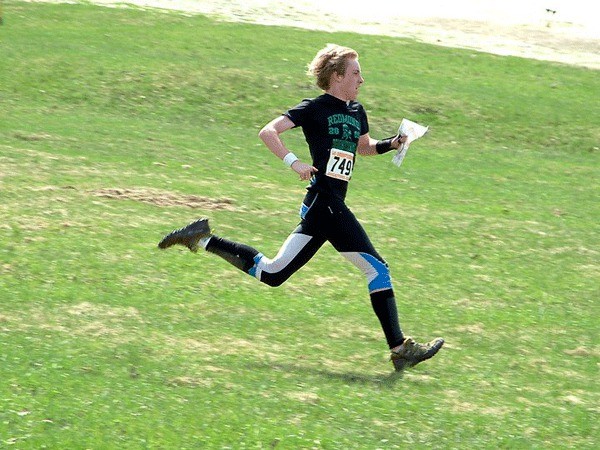This is no ordinary walk in the woods. This is a run, at the mercy of nature and knowledge of your surroundings. This is an adrenaline-packed race through thorny bushes, over logs and into mud that takes brains as well as brawn.
This is the sport of orienteering, and the 2012 United States Interscholastic and Intercollegiate Orienteering Championships are coming to Fort Ebey and Fort Casey state parks Saturday, April 21. The competition will continue in Snohomish County on Sunday, April 22.
The race begins at 10 a.m. Saturday, April 21 at Fort Ebey State Park.
The sport can be as recreational or as competitive as the participant wants, and unlike just going for a run, orienteering stimulates the brain, too, said Patrick Nuss, event director and board member for the Cascade Orienteering Club, the nonprofit group based in Seattle that was selected to host this event.
This is the second time the competition is being held on the West Coast.
While competitors are already signed up, an easier, recreational demonstration course will be available for the curious on Saturday, April 21. No pre-registration is required; just show up at Fort Ebey State Park with the $10 fee.
For those who don’t want to participate but still want to learn about the sport, Nuss said the finish line is a good place to spectate. Competitors will stream across the meadow as they rush to finish.
People may also watch a relay race at Fort Casey State Park beginning at 4:30 p.m. Saturday, April 21.
Orienteering involves using a map to navigate to various checkpoints in order and as quickly as possible, Nuss said. The maps are very detailed so competitors choose their path by finding references.
“It’s about trying to figure out what you’re seeing on the terrain and seeing it on the map,” Nuss said, adding, “it’s more about a map sport than a compass sport.”
Participants wear an electronic device on their finger. When they discover a checkpoint, which is generally marked by a one-foot-by-one-foot orange flag, they insert the device into the box and it records their progress, Nuss said. At the end of the race, the information from the device is downloaded to see how fast the participant made it to each checkpoint and if they found them in order.
Nuss said that many people think orienteering is like geocaching, in which people search for treasures using GPS coordinates, but orienteering is much different.
“You are your own GPS unit, so to speak. You are making your own decisions and navigating to that checkpoint,” Nuss said.
The sport is a fun way to get close to nature — really close. Competitors venture off the trails and climb over logs and through ferns and get dirty.
However, Nuss’ favorite part about the sport is that it works the mind while working the body.
“It’s really a sport that captures both the mental and the physical aspect,” Nuss said. He sees naturally fast participants, like members of high school cross country and track teams, but he also sees students from chess clubs and academic decathlon teams.
“The smarter, non-jock type athletes can do really well because it’s tailored to what they’re doing,” Nuss said.
Approximately 350 people are signed up to race at Fort Ebey State Park Saturday. The majority will be middle and high school students, as well as some college students, Nuss said.
Among the competitors are Oak Harbor High School students Erdylle Macapinlac, Haruka Earney, Todd Adair and Carl Stacy. Orienteering is part of the NJROTC program at the high school.
“It seemed like a fun thing to do outside of drill team,” Adair said.
Macapinlac said she has the scars to prove how hard she’s worked.
“They think it’s fun to have checkpoints made of thorn bushes,” Macapinlac said.
The team has about eight meets per year. This competition is outside of those normal meets so not all orienteering team members are participating.
The students described the meets as cold.
“Cold weather, you’re freezing, literally. Raining,” Macapinlac said.
“After awhile, you don’t feel the cold,” Earney added.
“It’s not like a regular park; it’s a forest, with thorns,” Macapinlac said. That means that by the end of the race, competitors are dripping wet and muddy, especially with the typical Whidbey weather, they said.
But they’re still excited to participate.
“It’s a good feeling every time you find the right marker; a sense of accomplishment,” Adair said.
For more information, visit oftw.cascadeoc.org.



